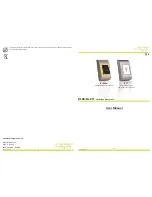
Battery Safety
QUICK REFERENCE GUIDE
35
As with
other types of batteries, Lithium-Ion (LI) batteries will
lose capacity over time. Capacity deterioration is noticeable
after one year of service whether the battery is in use or not.
It is difficult to precisely predict the finite life of a LI battery,
but cell manufacturers rate them at 500 charge cycles. In
other words, the batteries should be expected to take 500 full
discharge / charge cycles before needing replacement. This
number is higher if partial discharging / recharging is adhered
to rather than full / deep
discharging.
The typical manufacturer advertised useful life of LI batteries
is one to three years, depending on usage and number of
charges, etc., after which they should be removed from ser
-
vice, especially in mission critical applications. Do not con
-
tinue to use a battery that is showing excessive loss of
capacity, it should be properly recycled / disposed of and
replaced. For most applications, batteries should be replaced
after one year of service to maintain customer satis
faction
and minimize safety concerns.
Collect and recycle waste batteries separately from the
device in comply
with European Directive 2006/66/EC, 2011/
65/EU, 2002/96/EC and 2012/19/EU and subsequent modifi
-
cations, US and China regulatory and others laws and regula
-
tions a
bout the environment.





































